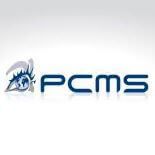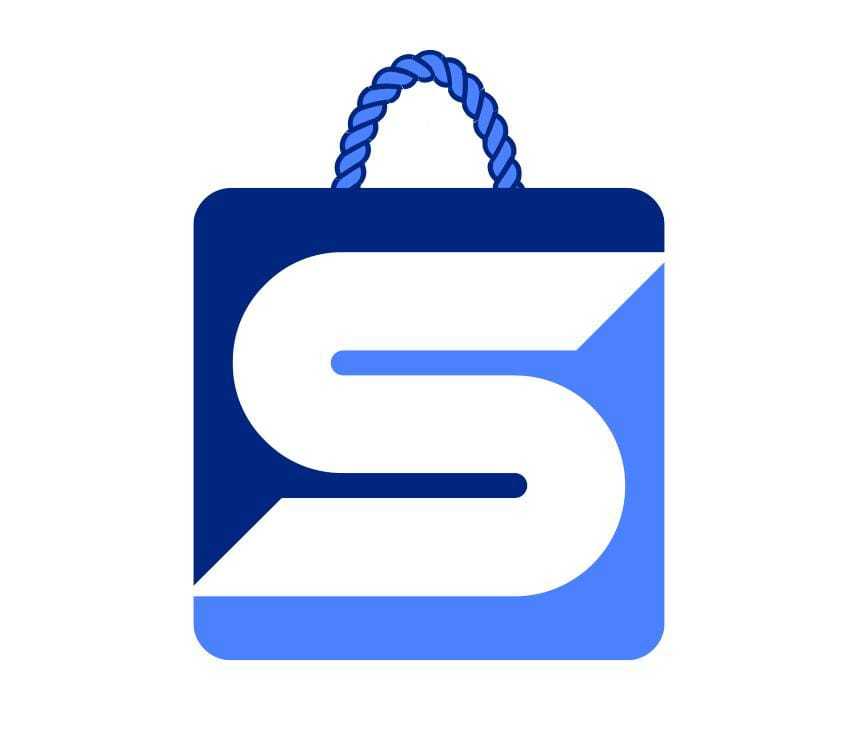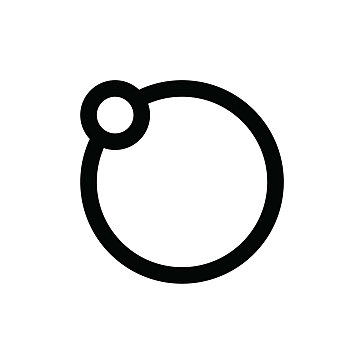Description

CAP POS

PCMS Retail
Comprehensive Overview: CAP POS vs PCMS Retail
CAP POS, PCMS Retail, and TRIMS are all prominent solutions in the retail technology space, each catering to different segments of the market with their unique functionalities and target audiences. Here's a comprehensive overview of each:
CAP POS
a) Primary Functions and Target Markets
- Primary Functions: CAP POS offers a complete Point of Sale (POS) system primarily designed for small to medium-sized retail businesses. It includes features such as inventory management, sales tracking, customer relationship management, and reporting capabilities.
- Target Markets: The system is targeted towards small independent retailers, quick-service restaurants, and specialty stores that require a cost-effective yet robust POS solution.
b) Market Share and User Base
- Market Share and User Base: CAP POS has a modest market share because it primarily serves small businesses. This sector is highly fragmented with numerous vendors, making the competition tight and the user base comparatively smaller than enterprise-level solutions.
c) Key Differentiating Factors
- User-Friendliness: Known for its easy-to-use interface, making it accessible for business owners who may not have extensive technical expertise.
- Cost-Effectiveness: Offers competitive pricing structures that appeal to budget-conscious small business owners.
- Customization: Provides customization options to suit specific business needs without the complexity of larger systems.
PCMS Retail
a) Primary Functions and Target Markets
- Primary Functions: PCMS Retail offers a sophisticated omni-channel retail platform with capabilities such as enterprise POS, customer engagement, inventory management, and analytics. It is designed to support complex retail operations across multiple sales channels.
- Target Markets: The solution is aimed at mid-sized to large retailers, including department stores, supermarkets, and large chains that require scalable and integrated systems to manage their operations globally.
b) Market Share and User Base
- Market Share and User Base: PCMS Retail is a significant player in the enterprise retail technology market. Its user base includes some high-profile retail chains, thanks to its robust and scalable platform which meets the demands of large-scale operations.
c) Key Differentiating Factors
- Omni-Channel Capabilities: Offers seamless integration across various sales channels, providing a unified customer experience.
- Scalability and Integration: Designed to grow with the business, easily integrating with existing enterprise systems like ERP and CRM platforms.
- Advanced Analytics: Provides deep insights into customer behavior and store performance through advanced analytics tools.
TRIMS
a) Primary Functions and Target Markets
- Primary Functions: TRIMS is an integrated retail management system that encompasses POS, merchandising, warehousing, and financial management modules. It is suitable for a range of retail verticals.
- Target Markets: TRIMS targets mid-sized to large fashion and apparel retailers who need a comprehensive solution to manage the lifecycle of products from design to sale.
b) Market Share and User Base
- Market Share and User Base: While not as widely recognized as some of its competitors, TRIMS has a loyal user base within its niche market, particularly in the fashion retail sector.
c) Key Differentiating Factors
- Fashion-Focused Features: Offers specialized features tailored for the fashion industry, such as style-color-sizes grids, pre-season planning, and range planning.
- End-to-End Solution: Provides a single platform to manage multiple aspects of retail operations, reducing the need for additional software.
- Industry Expertise: Known for deep industry expertise, providing solutions that address specific challenges faced by fashion retailers.
Conclusion
While CAP POS, PCMS Retail, and TRIMS serve different segments within the retail market, their differentiation largely lies in their targeted customer base and the complexity of the solutions they offer. CAP POS is ideal for small businesses needing a simple POS solution, PCMS Retail serves large retailers with its comprehensive omni-channel capabilities, and TRIMS excels in providing specialized tools for the fashion retail industry. Each product has carved out a niche based on its distinct features and market focus.
Contact Info

Year founded :
Not Available
Not Available
Not Available
Not Available
Not Available

Year founded :
Not Available
Not Available
Not Available
Not Available
Not Available
Feature Similarity Breakdown: CAP POS, PCMS Retail
When comparing software solutions like CAP POS, PCMS Retail, and TRIMS, which are typically designed for point-of-sale and retail management, it's useful to consider their similarity in features, user interfaces, and any unique aspects each offers. Here’s a breakdown:
a) Core Features in Common
-
Point of Sale (POS) Capabilities:
- All three solutions likely offer standard POS functions, such as sales processing, barcode scanning, receipt printing, and payment processing.
-
Inventory Management:
- These systems typically include tools for tracking inventory levels, managing stock, and ordering new inventory.
-
Customer Management:
- Features such as customer profiles, purchase history, and loyalty programs are common across all platforms to help businesses engage with customers.
-
Reporting and Analytics:
- Each system provides reporting tools to analyze sales data, monitor performance, and inform business decisions.
-
Multi-Store Support:
- Support for managing multiple stores, including centralized data management and transfer of information across locations, is standard.
b) User Interface Comparison
-
CAP POS:
- Known for its straightforward and user-friendly interface, CAP POS focuses on ease of use. The interface is usually uncluttered and intuitive, suitable for small to mid-sized businesses that prefer a more traditional POS experience.
-
PCMS Retail:
- PCMS typically offers a more flexible and customizable interface, catering to larger retailers who may need extensive integration capabilities and more complex setups. The design is often sophisticated, capable of handling a broad range of retail operations.
-
TRIMS:
- TRIMS tends to provide an interface that balances complexity and usability, making it accessible while still offering advanced functionalities. It may include various widgets and dashboards for quick insights into different aspects of the business.
c) Unique Features
- CAP POS:
- Simplicity and Affordability:
- One of its distinguishing features is the simplicity of deployment and operation, coupled with cost-effectiveness, making it appealing to smaller retailers.
- Simplicity and Affordability:
- PCMS Retail:
- Scalability and Integration:
- Known for extensive scalability options and seamless integration with other enterprise systems. PCMS Retail is often highlighted for its ability to handle complex retail environments, such as large chain stores with high transaction volumes.
- Scalability and Integration:
- TRIMS:
- Retail Enterprise Management:
- TRIMS might offer unique features tailored for fashion and apparel retailers, such as style and size management or visual merchandising tools.
- Agility and Custom Solutions:
- It often provides solutions that are agiler, allowing for custom configurations tailored to specific retail needs, perhaps with specialized modules for different retail sectors.
- Retail Enterprise Management:
In summary, while CAP POS, PCMS Retail, and TRIMS share common retail and POS functionalities, they differentiate themselves through their user interface designs and specific feature sets that cater to different types of retail environments. Retailers should consider their specific needs, such as the scale of operations or industry-specific requirements, when choosing between these solutions.
Features

Efficient Transaction Management
Customer Relationship Management
Sales and Reporting
User-Friendly Interface
Inventory Management
Sales Management
Inventory Control
Customer Management
Reporting and Analytics

Store Operations
Employee Management
Customer Engagement
eCommerce
Best Fit Use Cases: CAP POS, PCMS Retail
Certainly! Each of these systems has its strengths, which align with specific business needs and operational environments. Here's a breakdown of the best fit use cases for CAP POS, PCMS Retail, and TRIMS:
a) CAP POS
Types of Businesses or Projects Best Suited:
- Small to Medium-Sized Retailers: CAP POS is ideal for smaller businesses, such as independent retailers, specialty shops, and boutiques. It is designed to be user-friendly and cost-effective, making it an excellent choice for businesses that require a straightforward POS system without extensive customization.
- Businesses Needing Quick Implementation: As a relatively simple system, CAP POS can be set up quickly, making it suitable for businesses that need a POS solution immediately.
- Retailers Requiring Basic Inventory Management: It provides essential inventory management features, which are beneficial for businesses with straightforward tracking needs.
b) PCMS Retail
Preferred Scenarios:
- Medium to Large Enterprises: PCMS Retail is designed to handle the complexity and scale of medium to large retail businesses. Its robust set of features can accommodate extensive product lines and a high volume of transactions.
- Omnichannel Retailers: This system excels in supporting omnichannel retailing with its ability to integrate online and offline sales channels, providing a seamless experience across various customer touchpoints.
- Retailers Focusing on Customer Experience: PCMS Retail offers sophisticated tools for personalization and enhancing customer experience, making it ideal for retailers looking to differentiate through service and engagement strategies.
- Complex Promotion and Loyalty Management: The system provides advanced capabilities for managing complex promotions and loyalty programs, which are crucial for large retailers who use these strategies to drive sales.
c) TRIMS
When to Consider This Option:
- Fashion and Apparel Retailers: TRIMS is particularly well-suited for the fashion industry, providing features tailored to apparel businesses, such as size and color management, seasonality planning, and merchandise allocation.
- Retailers With Diverse Product Hierarchies: It provides excellent capabilities for handling complex product categorizations that are typical in fashion and lifestyle retail.
- Retailers Needing Strong Wholesale Functionality: TRIMS is a good choice for businesses that operate both retail and wholesale divisions, offering cohesion between different sales channels.
d) Industry Verticals and Company Sizes
Industry Verticals:
- CAP POS: Primarily targets smaller retail businesses across various industries including food and beverage (cafes, small restaurants) and specialty retail stores.
- PCMS Retail: Serves a broad range of industries including grocery, department stores, specialty retail, and digital commerce, with a focus on those needing robust omnichannel capabilities.
- TRIMS: Best suited for the fashion and apparel industry, but can extend to other lifestyle product sectors.
Company Sizes:
- CAP POS: Small to medium-sized enterprises (SMEs) that require an affordable, easy-to-use solution.
- PCMS Retail: Medium to large enterprises that need scalable solutions with extensive feature sets to support higher transaction volumes and complex operations.
- TRIMS: Typically used by medium-sized companies to larger corporations within the fashion industry, where the need for handling varied and detailed inventory attributes is critical.
Overall, the choice of system should consider the specific operational requirements, the complexity of the business processes, and the long-term strategic goals of the company. Each solution has its own strengths and is designed to tackle particular challenges faced by different types of businesses.
Pricing

Pricing Not Available

Pricing Not Available
Metrics History
Metrics History
Comparing undefined across companies
Conclusion & Final Verdict: CAP POS vs PCMS Retail
To provide a well-rounded conclusion and final verdict on CAP POS, PCMS Retail, and TRIMS, it's important to assess each of these retail management solutions based on factors like functionality, scalability, ease of use, integration capabilities, customer support, and cost.
Conclusion and Final Verdict
a) Best Overall Value
After considering all factors, PCMS Retail often emerges as the product offering the best overall value. This is primarily due to its robust functionality that caters to a wide range of retail operations, scalability for growing businesses, and strong integration capabilities that allow seamless operations alongside existing systems. Although it may come at a higher price point, the comprehensive suite of features and superior customer support justify the investment for many retail businesses.
b) Pros and Cons
CAP POS:
- Pros:
- User-friendly interface, ideal for small to medium-sized businesses.
- Affordable pricing structure, making it accessible for startups.
- Quick implementation time with straightforward onboarding processes.
- Cons:
- Limited scalability, which might not support larger or expanding enterprises.
- Basic integration capabilities, potentially leading to challenges in multi-system environments.
- Fewer advanced features compared to larger competitors.
PCMS Retail:
- Pros:
- Comprehensive feature set that supports a wide array of retail operations, from inventory management to customer relations.
- High scalability, suitable for businesses with expansion plans.
- Strong integration capabilities with other systems and technologies.
- Cons:
- Higher cost, potentially a barrier for smaller retailers.
- Complex setup and longer implementation time.
- May require more training and support to utilize fully.
TRIMS:
- Pros:
- Offers a good balance between functionality and cost, suitable for mid-sized businesses.
- Customizable features, allowing businesses to tailor solutions to their needs.
- Good inventory management capabilities, making it attractive for retailers with significant stock.
- Cons:
- Moderate scalability, which may not be ideal for rapidly growing businesses.
- Integration issues may arise with more complex systems.
- Customer support may not be as responsive as leading competitors.
c) Recommendations for Users
For users trying to decide between CAP POS, PCMS Retail, and TRIMS:
-
Assess Your Business Size and Growth Plans:
- If you are a small to medium-sized enterprise looking for an affordable, easy-to-use system, CAP POS might be sufficient.
- For larger retailers or those with aggressive growth plans, PCMS Retail provides the necessary scalability and feature set at a higher cost.
- TRIMS can be a middle-ground solution for mid-sized businesses needing customization and solid inventory management.
-
Evaluate Integration Requirements:
- Businesses with complex system environments or needing high interoperability should lean towards PCMS Retail, which excels in integration capabilities.
-
Budget Considerations:
- Consider the initial investment and long-term costs. While CAP POS offers a cost-effective solution, the other two options might offer better long-term value depending on business needs.
-
Feature Prioritization:
- Determine which features are non-negotiable for your business operations and match these requirements against what each solution offers.
-
Trial and Support:
- Take advantage of any free trials or demos to get a feel for the user interface and check available customer support options to ensure they meet your expectations.
Ultimately, selecting the right POS and retail management solution depends on aligning each product's offerings with your specific business requirements, budget, and growth strategy.
Add to compare
Add similar companies



